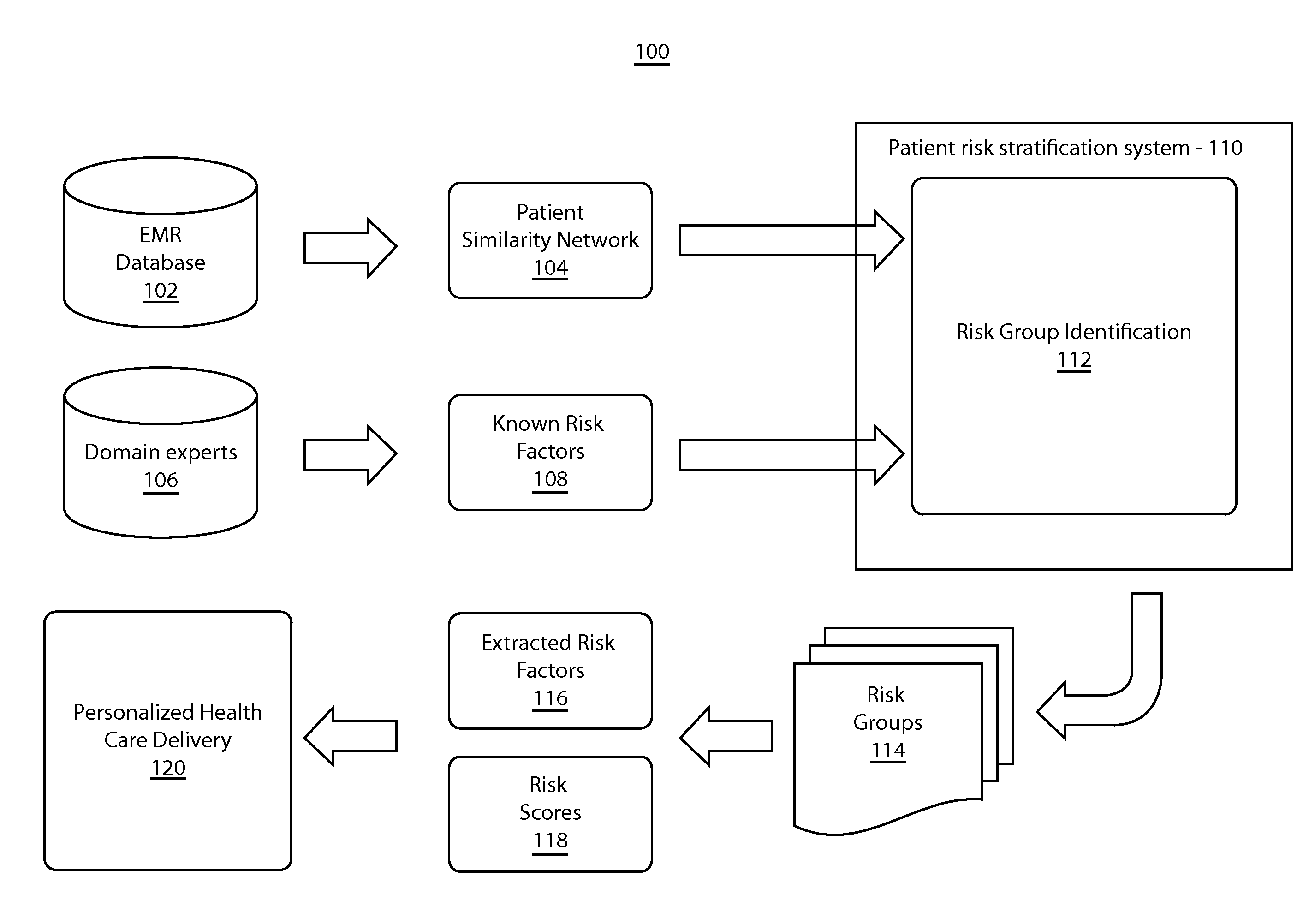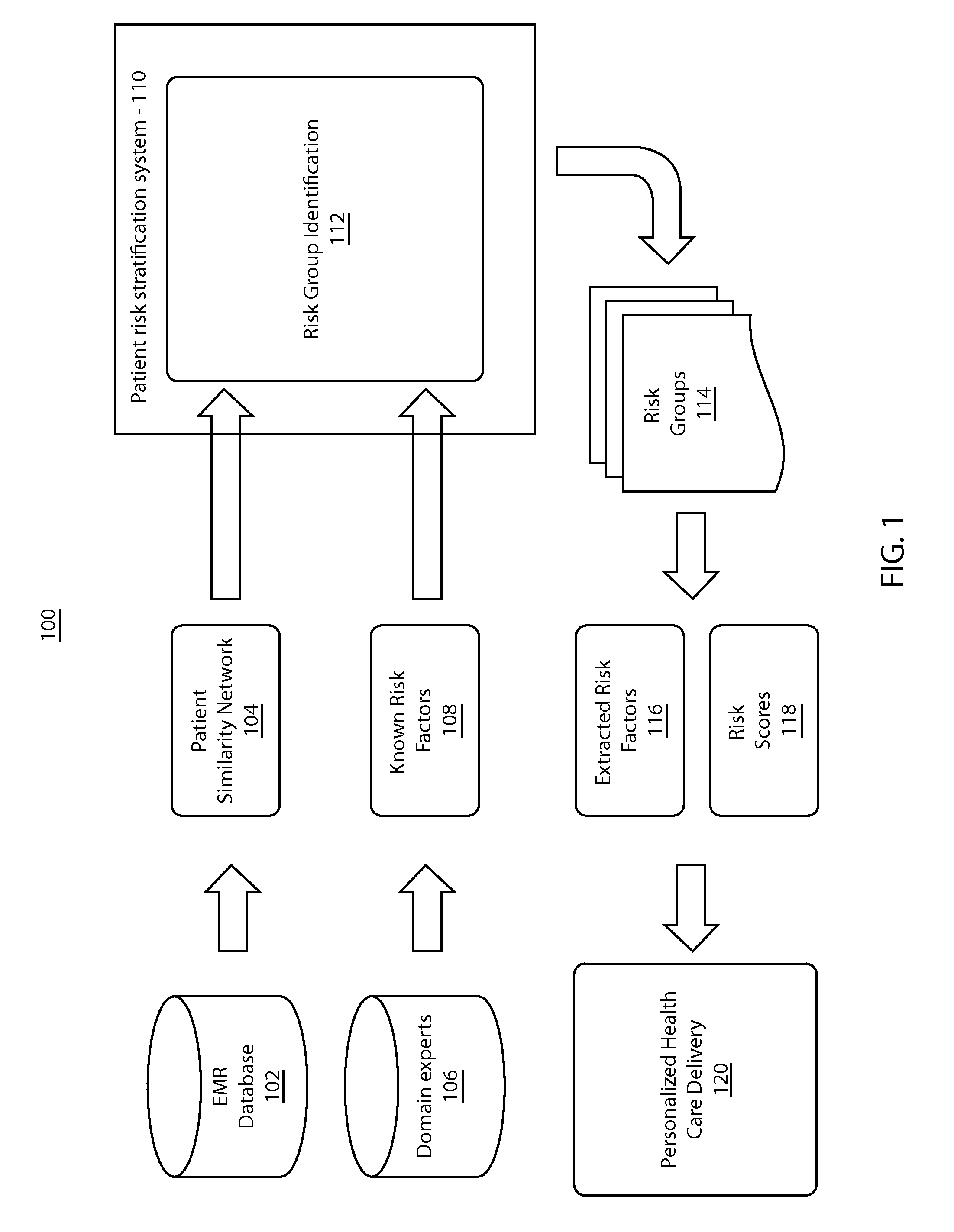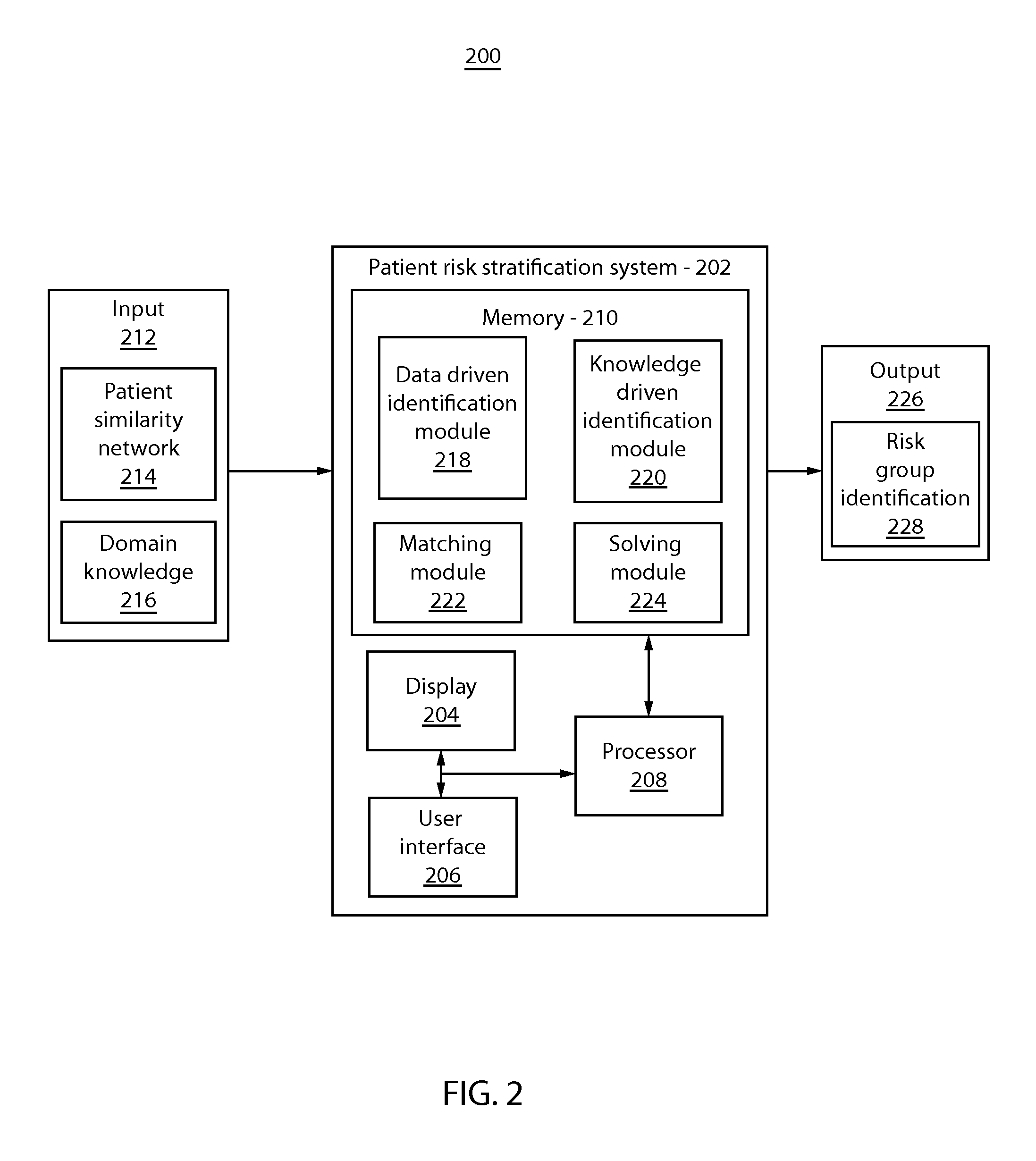Patient risk stratification by combining knowledge-driven and data-driven insights
a risk stratification and knowledge-driven technology, applied in the field of risk group identification, can solve the problems of incomplete domain knowledge, heterogeneity of patient clinical conditions, and inability to build a universal risk prediction model using a shared set of risk factors,
- Summary
- Abstract
- Description
- Claims
- Application Information
AI Technical Summary
Benefits of technology
Problems solved by technology
Method used
Image
Examples
Embodiment Construction
[0018]In accordance with the present principles, systems and methods for patient risk stratification are provided by combining knowledge-driven and data-driven insights. The present principles formulate an objective function that receives as input a patient similarity graph and expert knowledge domain (e.g., known risk factors) and outputs a set of patient risk groups that align with the known risk factors. The objective function is formulated to determine a first set of patient risk groups from patients in a patient similarity graph based on a similarity structure of the patient similarity graph. A second set of patient risk groups are identified based on expert domain knowledge associated with the patients. Patients in the first set and second set are aligned for patient stratification. The present principles may discover data-driven risk groups that are not covered by the knowledge-driven risk factors. An efficient solution is proposed based on Block Coordinate Descent to solve t...
PUM
 Login to View More
Login to View More Abstract
Description
Claims
Application Information
 Login to View More
Login to View More - R&D
- Intellectual Property
- Life Sciences
- Materials
- Tech Scout
- Unparalleled Data Quality
- Higher Quality Content
- 60% Fewer Hallucinations
Browse by: Latest US Patents, China's latest patents, Technical Efficacy Thesaurus, Application Domain, Technology Topic, Popular Technical Reports.
© 2025 PatSnap. All rights reserved.Legal|Privacy policy|Modern Slavery Act Transparency Statement|Sitemap|About US| Contact US: help@patsnap.com



